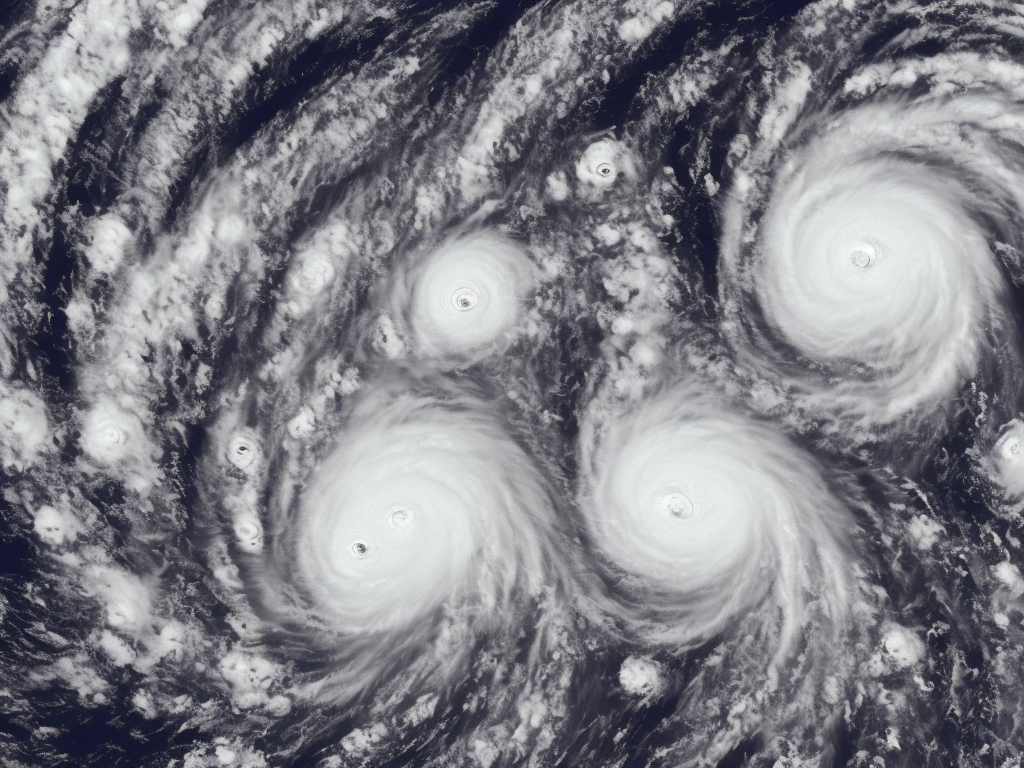
The world is full of natural phenomena that can be both beautiful and devastating. Among these, hurricanes, typhoons, and cyclones are some of the most powerful and destructive forces of nature. While they have distinct names, they essentially refer to the same type of weather phenomenon. In this article, we will explore the key differences between hurricanes, typhoons, and cyclones.
Firstly, it is important to understand that hurricanes, typhoons, and cyclones are all tropical cyclones. Tropical cyclones are large, rotating systems of clouds, thunderstorms, and powerful winds that form over warm ocean waters near the equator. These swirling storms are fueled by the warm, moist air rising from the ocean’s surface and can cause significant damage to coastal areas when they make landfall.
The main difference between hurricanes, typhoons, and cyclones lies in their geographical locations. Hurricanes are the term used to describe tropical cyclones that form over the North Atlantic Ocean and the Northeast Pacific Ocean, east of the International Dateline. On the other hand, typhoons refer to the same weather phenomenon, but they occur in the Northwest Pacific Ocean, west of the International Dateline. Lastly, cyclones are the term used for tropical cyclones that form in the South Pacific Ocean and the Indian Ocean.
Despite their different names, hurricanes, typhoons, and cyclones are all fueled by a similar set of conditions. These conditions include warm ocean temperatures, high humidity, and relatively weak wind shear. Warm ocean temperatures of around 80 degrees Fahrenheit (27 degrees Celsius) or more provide the energy needed to power these cyclones. High humidity in the atmosphere helps to maintain and strengthen the systems by providing the necessary moisture. Wind shear, or the variation in wind speed or direction with increasing altitude, needs to be relatively weak to allow the cyclone to organize and strengthen.
Typically, hurricanes, typhoons, and cyclones are organized into different categories based on their wind speeds. In the Atlantic Ocean, hurricanes are classified into five categories according to the Saffir-Simpson Hurricane Wind Scale. Category 1 hurricanes have wind speeds of 74 to 95 miles per hour (119 to 153 kilometers per hour), while Category 5 hurricanes have wind speeds exceeding 157 miles per hour (252 kilometers per hour). In the Northwest Pacific Ocean and the Indian Ocean, typhoons and cyclones are typically classified using different intensity scales, such as the JTWC (Joint Typhoon Warning Center) scale or the IMD (India Meteorological Department) scale, respectively.
While hurricanes, typhoons, and cyclones share many similarities, there are also some differences in their characteristics. For instance, when it comes to size, typhoons tend to be larger than hurricanes. A typhoon can measure more than 1,000 miles (1,600 kilometers) across, while hurricanes are usually smaller in size. However, this distinction is not true for every cyclone and can vary from storm to storm.
Another difference can be found in the formation areas of these tropical cyclones. Hurricanes primarily form in the Atlantic Ocean, the Caribbean Sea, the Gulf of Mexico, and the eastern coast of the United States. On the other hand, typhoons form over the Northwest Pacific Ocean, affecting countries like Japan, China, the Philippines, and Vietnam. Cyclones, on the other hand, form over the Indian Ocean and affect countries such as India, Bangladesh, and Australia.
In terms of frequency, hurricanes are more common than typhoons and cyclones. The Atlantic hurricane season runs from June 1st to November 30th, with the peak activity occurring between mid-August and late October. On average, the Atlantic experiences about six hurricanes per year, with varying intensities. The Northwest Pacific, on the other hand, is the most active tropical cyclone basin in the world, with an average of 26 named storms per year.
Regarding the impact on coastal regions, the damage caused by hurricanes, typhoons, and cyclones can be catastrophic. These tropical cyclones can produce heavy rainfall, strong winds, storm surges, and even tornadoes, leading to widespread destruction. The severity of the impact depends on the intensity of the cyclone, the location it hits, and the preparedness of the affected area. Vulnerable communities must have early warning systems, evacuation plans, and resilient infrastructure in place to minimize the loss of life and property damage.
In conclusion, hurricanes, typhoons, and cyclones are different names used to describe the same type of tropical cyclones that occur in specific geographic locations. Hurricanes occur in the North Atlantic and Northeast Pacific, typhoons form over the Northwest Pacific, and cyclones are seen in the South Pacific and the Indian Ocean. While they exhibit slight differences in size, formation areas, and frequency, these tropical cyclones are characterized by the same set of conditions, including warm ocean temperatures, high humidity, and weak wind shear. Regardless of their names, hurricanes, typhoons, and cyclones often leave behind a trail of destruction, emphasizing the importance of preparedness and resilience for coastal communities.
 Self-Instruct
Self-Instruct